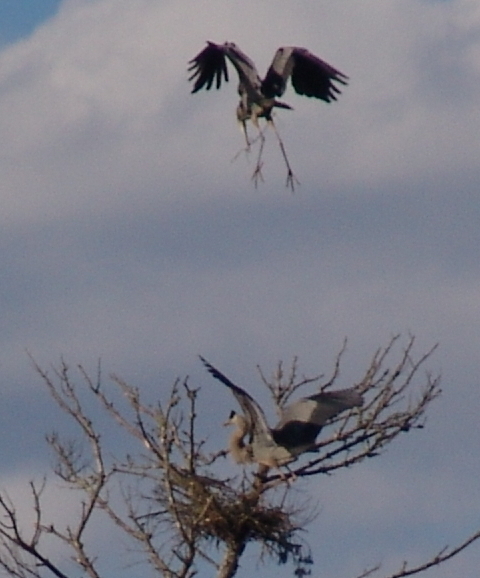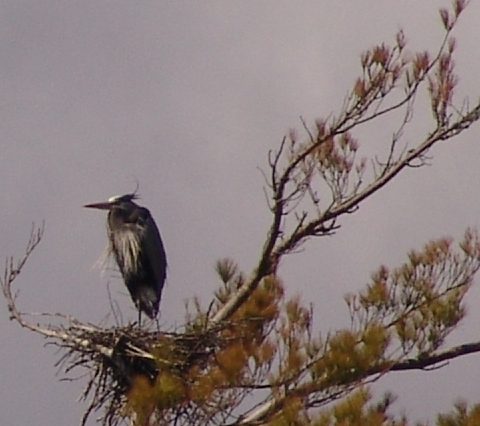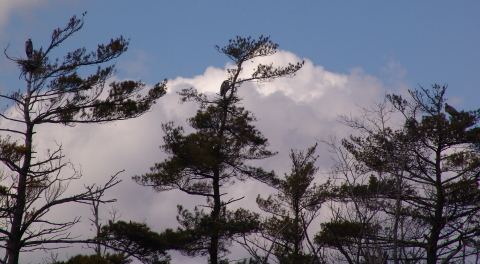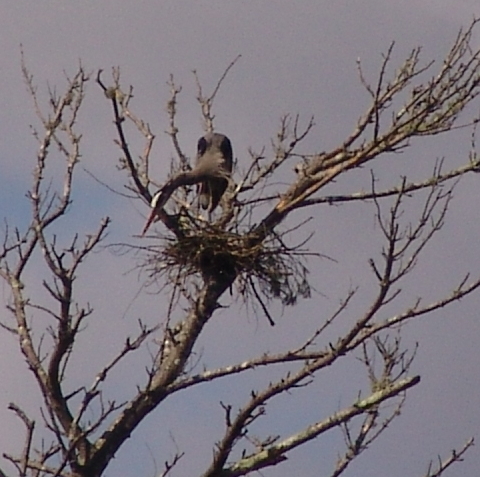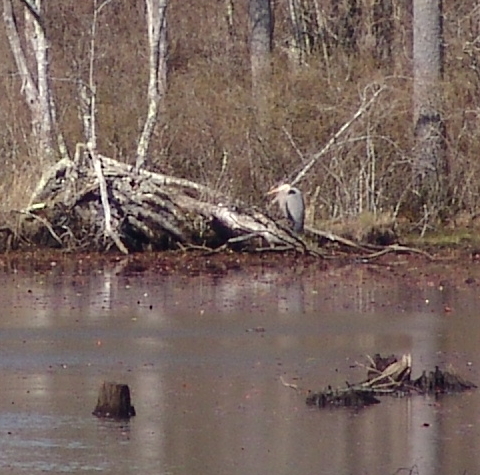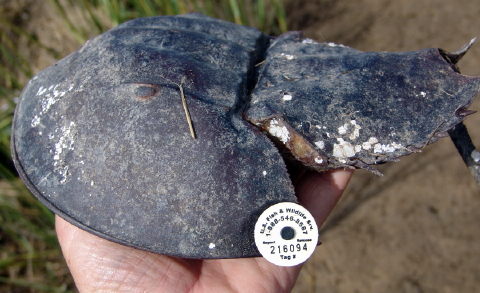
 Tagged Horseshoe Crab (Limulus polyphemus)
“Horseshoe crabs are evolutionary survivors that have remained relatively unchanged in appearance for 350 million years,” begins the U.S. Fish and Wildlife Service information fact sheet on “The Horseshoe Crab (Limulus polyphemus) — A Living Fossil.” As youngsters summering on Cape Cod, the Turtle Journal team remembers swarms of thousands of mating horseshoe crabs on beaches from Falmouth to Provincetown. Wading in the tidal flats was transformed into an obstacle course as we stepped over myriad pairs of horseshoe crabs approaching the beach. Today, populations have dwindled by orders of magnitude as these gentle critters have been harvested for conch and whelk bait, have been bled for medical research, and have been hunted and killed for bounties. These inter-tidal roto-tillers provide a critical service for the estuarine ecosystem, and as you will learn in the fact sheets below, horseshoe crab eggs are a critical factor in some of the longest shorebird migrations on record.
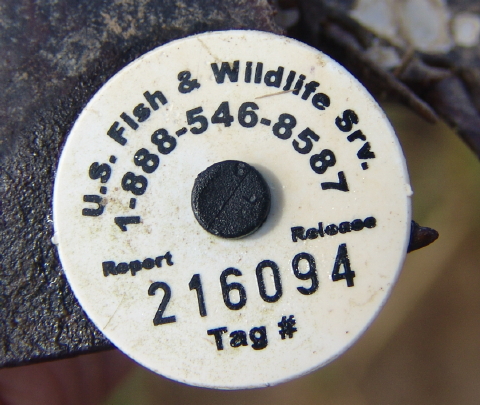
Close-Up of Horseshoe Crab Tag
Turtle Journal’s Don Lewis discovered the tagged horseshoe crab in the salt marsh off Lieutenant Island. He photographed the animal and the tag, and later called the toll free number of this U.S. Fish and Wildlife Service research project.
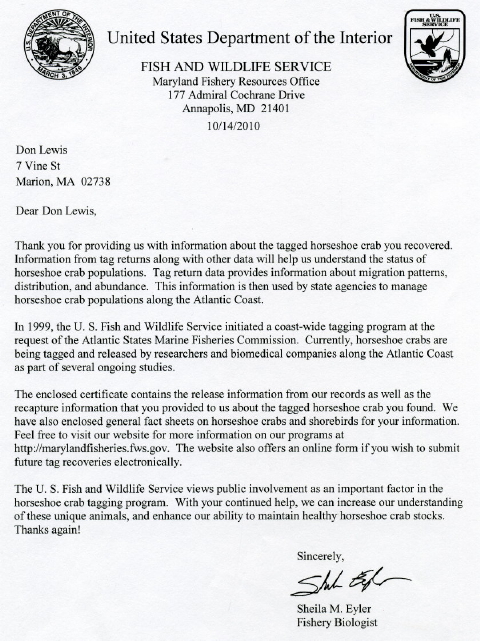
Letter from U.S. Fish and Wildlife Service (Click on Image)
We received a nice letter from the U.S. Fish and Wildlife Service to give us more information about the tagging program and to thank us for our participation.
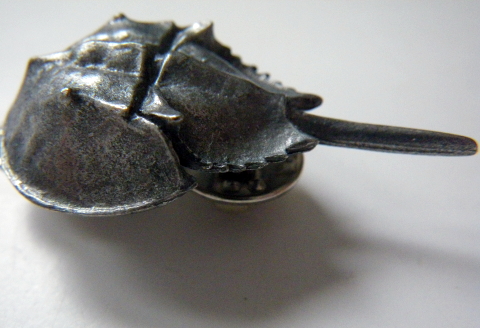
Horseshoe Crab Pin
Included with the letter was a wonderful horseshoe crab pin that captures the very essence of this ancient critter in miniature. We will wear it with pride.Â

Horseshoe Crab Fact Sheet (Click on Image)
The package from Fish and Wildlife also included a great fact sheet on horseshoe crabs …
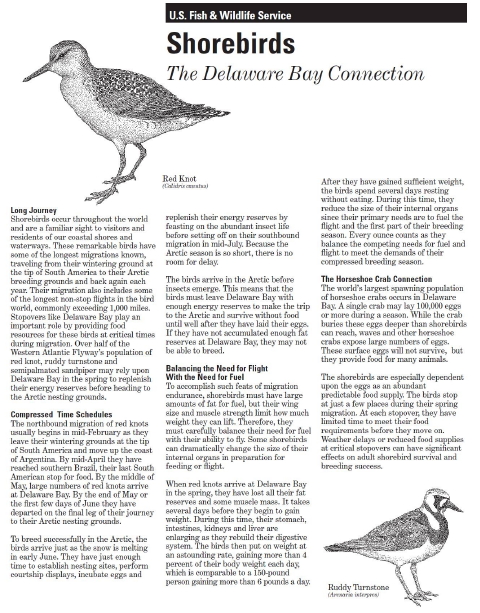
Shorebirds Fact Sheet (Click on Image)
… and a background paper on shorebirds that depend on horseshoe crab eggs.
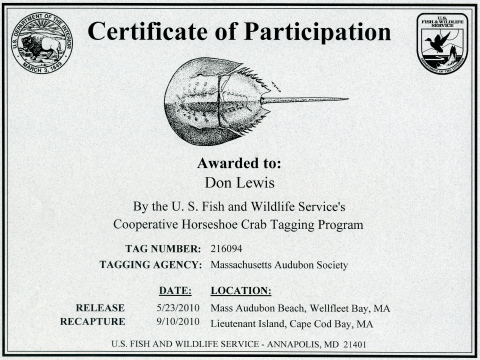
U.S. Fish and Wildlife Service Certificate
Turtle Journal encourages you, too, to participate in these worthwhile research programs. Whenever you find a tag in the wild, record the tag number, make a note of the telephone number, remember the location, and give U.S. Fish and Wildlife a call.
In our hearts and memories, horseshoe crabs are a quintessential Cape Cod symbol. And, between turtles at 300 million years old and horseshoe crabs at 350 million years old, we are fortunate to study living fossils that may actually have something important to teach their big brained yet less capable successors about LONG term survival.



